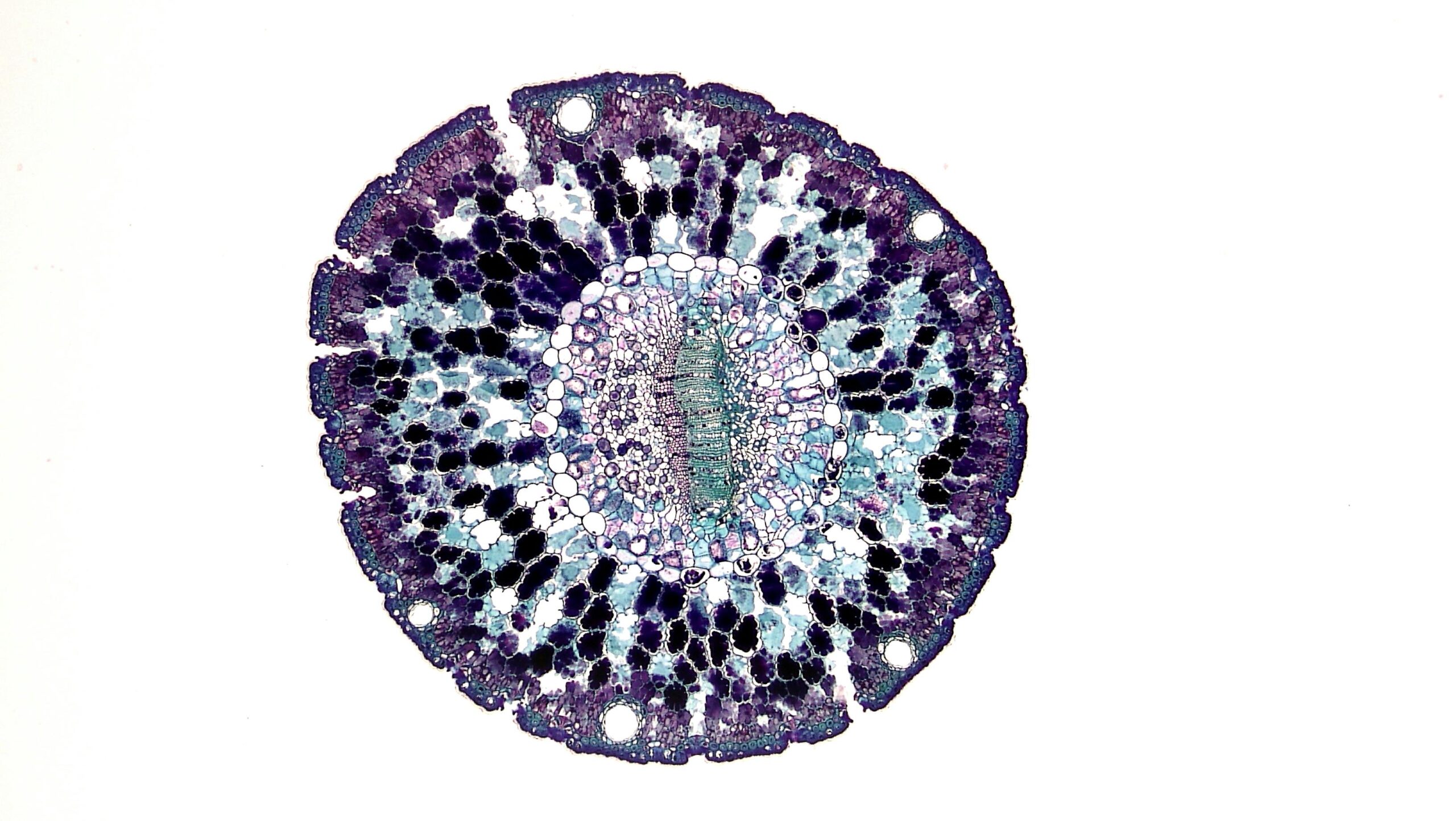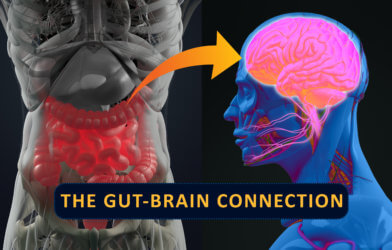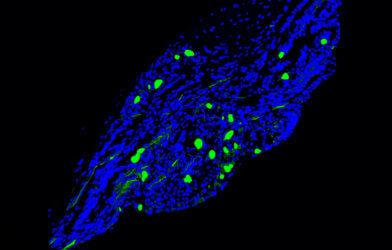What if the microscopic residents of your gut — the trillions of bacteria living in your intestines — are secretly pulling strings, influencing something as fundamental as your brain’s chemistry and function? A groundbreaking new study suggests just that, revealing a surprising and intricate connection between the world inside your belly and the complex workings of your mind. This isn’t about vague “gut feelings” or trendy diets. This is about a deep, molecular conversation, where your gut bacteria appear to be whispering instructions that literally change how proteins in your brain are built and function. It’s a discovery that challenges our understanding of brain health and opens up startling new possibilities for treating neurological disorders, right down to the food we eat.
A New Lens into Brain Chemistry
Proteins are the workhorses of every cell in your body, from building muscle to sending signals in your brain. To work correctly, these proteins often need modifications, like attaching sugars in a process called “glycosylation.” Think of it like adding different attachments to a multi-tool – each attachment changes what the tool can do. Scientists have known for a while that glycosylation is vital for many cellular processes, including how cells talk to each other, how they stick together, and even how they move. When this process goes wrong, it’s been linked to serious diseases like cancer and nerve disorders.
Understanding glycosylation has been notoriously difficult. It’s like trying to count individual grains of sand on a vast beach – the sheer volume and subtle differences make it nearly impossible. Only a tiny fraction of proteins are glycosylated, and getting enough of them to analyze with precision has been a huge hurdle.
That is, until now. Researchers at EMBL Heidelberg have developed a revolutionary new method called “deep quantitative glycoprofiling,” or DQGlyco for short. This isn’t just an incremental improvement; it’s a game-changer. “So far, it’s not been possible to do such studies on a systematic scale, in a quantitative fashion, and with high reproducibility,” explained Mikhail Savitski, a senior scientist and team leader at EMBL Heidelberg. “These are the challenges we managed to overcome with the new method.”
DQGlyco is designed to be efficient and affordable. It uses tiny silica beads to selectively capture and enrich glycosylated proteins from biological samples. This allows scientists to identify and measure them with unprecedented accuracy. When the team used DQGlyco on mouse brain tissue, they identified an astounding 177,198 unique protein-sugar combinations. That’s a whopping 25 times more than what previous top-tier studies could find. This leap in measurement capability allows researchers to investigate “microheterogeneity,” which means the exact same spot on a protein can have many different types of sugars attached to it, sometimes hundreds. This widespread “sugar diversity” on proteins was long suspected but never clearly demonstrated until now, thanks to DQGlyco.
The Gut-Brain Connection: A Molecular Link
With this powerful new tool, the researchers turned their attention to a profound biological mystery: How does our gut microbiome – the vast community of bacteria, viruses, and fungi living in our digestive tract – influence our brain? There’s growing evidence that these microscopic passengers can affect our mood, behavior, and even neurological conditions, but the exact molecular mechanisms have largely remained unknown.
To explore this, the team collaborated with Michael Zimmermann’s group at EMBL. They designed an experiment to see if the gut microbiome could, in fact, alter the glycosylation patterns they observed in the brain. They used germ-free mice – animals raised in a completely sterile environment with no microbes in or on their bodies. These “blank slate” mice were then compared to mice that were deliberately given specific gut bacteria.
The findings were striking. Mice with different gut bacteria showed noticeable differences in their brain’s glycosylation patterns compared to their germ-free counterparts. These changes weren’t random; they were particularly pronounced in proteins already known to play vital roles in brain functions, such as those involved in thinking, learning, and the growth of nerve fibers.
The implication here is profound: the bacteria in your gut aren’t just helping you digest food; they might be directly influencing the very proteins that govern your thoughts, memories, and actions. Clément Potel, one of the study’s first authors, noted that “Glycosylation is implicated in many processes, such as neurotransmission and axon guidance, so we wanted to test if this was a mechanism by which gut bacteria influenced molecular pathways in the brain.” This research provides compelling evidence that the gut-brain axis – the communication pathway between your gut and your brain – involves highly specific molecular changes, with gut microbes acting as orchestrators of protein modifications in the brain.
Beyond the Brain: Sugar’s Role in Health
The study didn’t just identify these changes; it delved into how they happen and what their potential consequences might be. The scientists looked at what happens when they block a specific type of sugar modification called fucosylation in human cells. They observed that even within the same protein, different sugar attachments on different sites responded at varying speeds to the blockage. This points to the regulation of these sugar modifications being far more intricate than previously thought, involving precise, site-specific controls rather than simple, global changes.
To understand which of these modified proteins are truly active on the cell surface (where they interact with the outside world), the researchers developed a clever technique using enzymes to “clip” off exposed sugar structures. They found that while some sugar structures were easily removed, others, particularly those crucial for cell signaling and adhesion, remained protected within the cell. This allowed them to map out, for the first time on a large scale, which sugar modifications are actually present and functional on the surface of human cells.
Furthermore, the study explored how glycosylation patterns vary across different tissues in the mouse body – brain, liver, and kidney. They found that while there’s a general tissue-specific signature, some individual sites on proteins showed remarkable differences in their sugar patterns depending on the tissue. This “tissue specificity” suggests that glycosylation isn’t just about the presence or absence of a protein, but about the specific sugar modifications that fine-tune its activity in different parts of the body.
The team also examined the impact of different gut microbiome compositions on the mouse brain. They used three groups of adult mice: germ-free, those with a common human gut microbe (Bacteroides uniformis), and those with a defined mixture of eight human gut bacteria. They observed significant changes in both protein levels and sugar modification patterns in the brains of colonized mice compared to germ-free mice. The changes were particularly noted in proteins involved in crucial neuronal processes, such as how nerve fibers find their way (axon guidance) and how nerve cells communicate (neurotransmission). For example, a protein called EAAT2, vital for clearing a brain chemical called glutamate from the spaces between nerve cells, showed significant changes in its sugar modifications. Glutamate is crucial for brain function, but too much can be harmful. Altered glycosylation of EAAT2 has previously been linked to neurological diseases like schizophrenia. This finding points to a potential pathway through which gut microbes could influence brain health by subtly altering the chemical landscape of our brains.
This research offers a compelling molecular mechanism for how our gut talks to our brain. The findings highlight that our microbial residents are not passive passengers, but active participants in shaping our neurological well-being.
Paper Summary
Methodology
The study introduces Deep Quantitative Glycoprofiling (DQGlyco), a new method for precisely measuring protein glycosylation. This method involves enriching glycosylated peptides from human cell lines or mouse tissues and analyzing them using liquid chromatography-mass spectrometry (LC-MS/MS) with tandem mass tag (TMT) labeling for quantitative comparisons across up to 18 samples. Mouse experiments used germ-free C57BL/6 mice, some of which were colonized with specific gut bacteria, to study the impact of the gut microbiome on brain glycosylation. All animal procedures followed approved ethical guidelines.
Results
DQGlyco identified 177,198 unique protein-sugar combinations in the mouse brain, a 25-fold improvement over prior studies, and revealed widespread “microheterogeneity” where single protein sites had numerous sugar variations. Experiments showed that blocking specific sugar modifications led to highly specific changes. Crucially, a defined gut microbiota significantly altered protein glycosylation patterns in the mouse brain, especially on proteins involved in nerve cell growth and communication (e.g., EAAT2). Different sugar attachments also affected protein solubility.
Limitations
The study notes that absolute quantification of sugar modifications remains challenging due to detection issues. For one type of sugar modification, the exact attachment spot within a peptide couldn’t always be pinpointed. The predictive power of their computer model for sugar variations, while significant, is not perfect. Direct functional proof of the observed glycosylation changes induced by gut bacteria requires further research.
Funding and Disclosures
The research was supported by the European Molecular Biology Laboratory (EMBL), along with grants and fellowships from organizations like the European Research Council and the Paul G. Allen Frontiers Group. The authors declared no competing interests, and EMBL provided open access funding.
Publication Information
The study, “Uncovering protein glycosylation dynamics and heterogeneity using deep quantitative glycoprofiling (DQGlyco),” was published online on February 10, 2025, in Nature Structural & Molecular Biology. The DOI is https://doi.org/10.1038/s41594-025-01485-w. The authors include Clément M. Potel and Mikhail M. Savitski.











